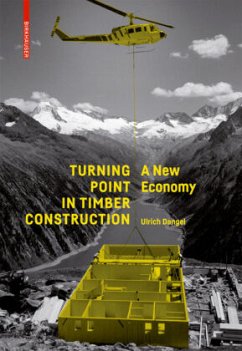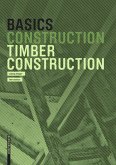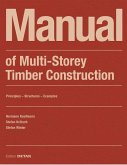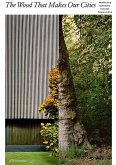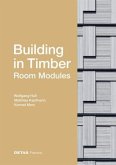Angesichts des vom Menschen verursachten Klimawandels und der Notwendigkeit, Wohnraum für eine wachsende Weltbevölkerung zu schaffen, ist zu überdenken, wie künftig gebaut werden soll. Holz ist ein Baumaterial, das unbegrenzt nachwächst, wenn Wachstum und Ernte nachhaltig bewirtschaftet werden. Jüngste technologische Fortschritte ermöglichen den Bau von hohen mehrstöckigen Tragwerken aus Holz und können so unsere Bauten und Städte von CO2-Verursachern in Kohlenstoffsenken verwandeln.
Das Buch präsentiert überzeugende Argumente für den verstärkten Einsatz von Holz als Alternative zu energieintensiven Baustoffen. Ein integrierter Ansatz des Bauens mit Holz hat das Potenzial, sich nachhaltig auf die Umwelt, die lokale Wirtschaft und die Baukultur im Allgemeinen auszuwirken.
Das Buch präsentiert überzeugende Argumente für den verstärkten Einsatz von Holz als Alternative zu energieintensiven Baustoffen. Ein integrierter Ansatz des Bauens mit Holz hat das Potenzial, sich nachhaltig auf die Umwelt, die lokale Wirtschaft und die Baukultur im Allgemeinen auszuwirken.
This is a lovely new book which describes how multi-storey timber buildings fit into the global supply chain of wood from renewable forests to engineered wood products.
The very broad coverage gives an excellent overview of many related topics, although it does not allow space for specialised technical information or construction details.
The target audience is likely to be entry level university students, design professionals, or building owners who are seeking an overview of the opportunities for structural timber. The book makes a convincing case for timber construction as a cost-effective and sustainable contribution to global problems of carbon emissions and environmental pollution.
The chapter on forestry and sustainability is an excellent description of renewable forestry's contribution to global reductions of CO2 emissions. Following chapters describe new developments in the manufacturing of many different structural timber products, with computer controlled machinery supported by traditional craftsmen, creating opportunities for large scale timber construction.
The potential and future outlook for large timber buildings is explored with reference to many important issues such as regional development, energy conservation, digital manufacturing, pre-fabricated construction, durability of timber buildings, and the positive contribution of such buildings to personal health and wellbeing.
The small (A5) format is very readable, beautifully illustrated with colour photographs and simple graphics of world forestry and the atmospheric carbon cycle. There are photographs of historical timber buildings, modern wood fabrication factories, and many multi-storey timber buildings designed by world-leading architects, under construction or recently completed.
Prof. Andy Buchanan
PTL Structural Consultants
The very broad coverage gives an excellent overview of many related topics, although it does not allow space for specialised technical information or construction details.
The target audience is likely to be entry level university students, design professionals, or building owners who are seeking an overview of the opportunities for structural timber. The book makes a convincing case for timber construction as a cost-effective and sustainable contribution to global problems of carbon emissions and environmental pollution.
The chapter on forestry and sustainability is an excellent description of renewable forestry's contribution to global reductions of CO2 emissions. Following chapters describe new developments in the manufacturing of many different structural timber products, with computer controlled machinery supported by traditional craftsmen, creating opportunities for large scale timber construction.
The potential and future outlook for large timber buildings is explored with reference to many important issues such as regional development, energy conservation, digital manufacturing, pre-fabricated construction, durability of timber buildings, and the positive contribution of such buildings to personal health and wellbeing.
The small (A5) format is very readable, beautifully illustrated with colour photographs and simple graphics of world forestry and the atmospheric carbon cycle. There are photographs of historical timber buildings, modern wood fabrication factories, and many multi-storey timber buildings designed by world-leading architects, under construction or recently completed.
Prof. Andy Buchanan
PTL Structural Consultants

